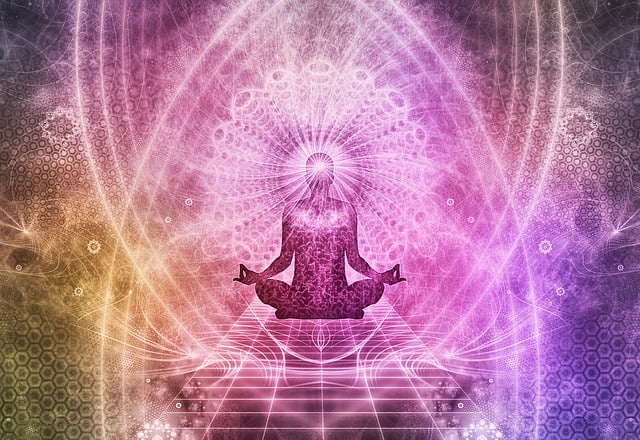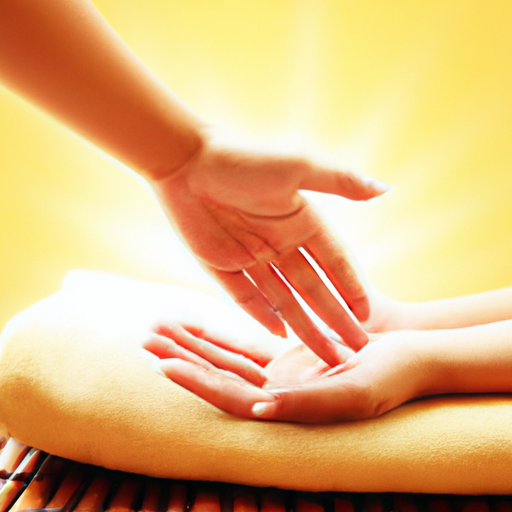
Have you ever wondered if you have the ability to practice Reiki healing? Well, the good news is that anyone can learn and practice Reiki, regardless of age, gender, or background. Reiki is a gentle and non-invasive form of energy healing that is based on ancient Japanese techniques. It is believed that by channeling energy through their hands, a Reiki practitioner can help balance and restore harmony to a person’s physical, emotional, and spiritual well-being. In the upcoming article, we will delve deeper into the world of Reiki, exploring its origins, benefits, and the steps you can take to become a Reiki practitioner yourself. So, if you’re curious about this fascinating practice and want to learn more, keep reading!
Reiki healing is not limited to a select few; it is a practice that is accessible to everyone. Whether you are a complete beginner or have some experience with alternative healing methods, Reiki can be learned and incorporated into your daily life. The beauty of Reiki lies in its simplicity and effectiveness. By learning a few basic hand positions and techniques, you can start harnessing this universal life force energy and begin your journey towards healing and transformation. Are you ready to unlock your potential as a Reiki practitioner? In our upcoming article, we will share practical tips and guidance to help you on this exciting path. Stay tuned to discover the wonders of Reiki and how it can enhance your overall well-being.
Understanding Reiki Healing
What is Reiki healing?
Reiki healing is an ancient Japanese practice that aims to promote physical, emotional, and spiritual well-being. It is based on the belief that humans have a life force energy that flows through them, and when this energy is low or blocked, it can lead to illness or a lack of vitality. Reiki healing works by channeling this universal life force energy through the practitioner’s hands to the recipient, allowing them to restore balance and promote healing within themselves.
How does Reiki healing work?
Reiki healing works through a gentle touch or hovering of hands over the recipient’s body. The practitioner acts as a conduit for the universal life force energy, allowing it to flow through them and into the recipient. This energy is intelligent and knows exactly where it needs to go to promote healing. It can be directed to specific areas of the body that may be experiencing pain or discomfort, or it can be applied to the body as a whole to promote overall wellness.
The principles of Reiki healing
Reiki healing is guided by five principles that serve as a foundation for the practice. These principles are:
- Just for today, I will not be angry.
- Just for today, I will not worry.
- Just for today, I will be grateful.
- Just for today, I will do my work honestly.
- Just for today, I will be kind to every living thing.
By embracing these principles, both practitioners and recipients of Reiki healing are encouraged to cultivate a positive mindset, let go of negativity, and create a state of harmony within themselves and the world around them.
Who Can Practice Reiki Healing?
Reiki healers
Anyone can learn to practice Reiki healing, regardless of their age, gender, or background. It is not limited to any specific religious or spiritual beliefs, making it accessible to people from all walks of life. Becoming a Reiki healer involves learning the various techniques and hand positions used in the practice, as well as understanding the principles and philosophy behind Reiki healing.
Requirements to become a Reiki practitioner
To become a Reiki practitioner, you must first undergo attunement or initiation from a Reiki master. Attunement is a process that opens and aligns your energy channels, allowing you to receive and transmit Reiki energy. It is during this initiation that the practitioner’s energetic connection to Reiki is established and enhanced.
The importance of Reiki attunement
Attunement is a vital step in becoming a Reiki practitioner, as it enables you to access and channel the universal life force energy. Without proper attunement, a person may not be able to effectively connect with and utilize this healing energy. Attunement also serves as a spiritual and energetic awakening, deepening the practitioner’s connection to themselves and the world around them.

Benefits of Reiki Healing
Physical benefits of Reiki healing
Reiki healing has been known to provide numerous physical benefits. It can help alleviate pain, reduce inflammation, and promote relaxation and stress reduction. By promoting the flow of energy throughout the body, Reiki healing can also support the body’s natural healing processes, boost the immune system, and improve overall well-being.
Emotional and mental benefits of Reiki healing
In addition to its physical benefits, Reiki healing can also have a profound impact on one’s emotional and mental well-being. It is often used as a complementary therapy for anxiety, depression, and stress-related disorders. Reiki healing promotes deep relaxation and can help individuals release emotional blockages, experience clarity, and cultivate a greater sense of inner peace and calm.
Spiritual benefits of Reiki healing
Reiki healing is deeply connected to spirituality, although it is not tied to any specific religious beliefs. Many people find that Reiki healing allows them to deepen their spiritual connection, tap into their intuition, and experience a sense of unity and connection with the divine. It can also help individuals on their spiritual journey by promoting self-reflection, self-awareness, and personal growth.
Reiki Healing Techniques
Traditional Reiki hand positions
Traditionally, Reiki healing is performed by placing hands on specific areas of the body, known as the hand positions. These hand positions correspond to the major energy centers or chakras in the body. By placing hands on these areas, the Reiki practitioner can direct healing energy to where it is most needed. The hand positions can be used both in-person and during remote or distant Reiki healing sessions.
Remote or distant Reiki healing
Remote or distant Reiki healing allows the practitioner to send healing energy to a recipient who is not physically present. This can be done through techniques such as visualization, intention, or using a surrogate object to represent the recipient. Remote Reiki healing is based on the understanding that energy is not bound by time or space and can be transmitted over any distance.
Combining Reiki with other healing modalities
Reiki healing can be complemented by other healing modalities such as massage therapy, acupuncture, or counseling. It can enhance the effectiveness of these treatments by promoting relaxation, supporting the body’s natural healing processes, and addressing energetic imbalances. Combining Reiki with other modalities allows for a more holistic approach to healing and well-being.

Myths and Misconceptions about Reiki Healing
Reiki healing is only for spiritual or religious people
While Reiki healing has spiritual aspects, it is not limited to those who follow a specific spiritual or religious path. Reiki healing is accessible to anyone, regardless of their beliefs or background. It is a universal practice that can be embraced by people from all walks of life.
Reiki healing conflicts with medical treatments
Reiki healing is not meant to replace medical treatments or professional medical advice. It is a complementary therapy that can support and enhance traditional medical treatments. Reiki healing can work hand in hand with medical interventions, promoting relaxation, alleviating stress, and supporting the body’s natural healing processes.
Reiki healing can only be performed in person
While in-person Reiki sessions are common, Reiki healing can also be conducted remotely or from a distance. Energy is not limited by physical proximity and can be transmitted over any distance. Remote or distant Reiki healing sessions can be just as effective as in-person sessions.
Preparing for a Reiki Healing Session
Finding a qualified Reiki practitioner
When seeking a Reiki healing session, it is important to find a qualified and reputable Reiki practitioner. Look for practitioners who have received proper training and have undergone attunement from a Reiki master. Personal recommendations and research can help in finding a practitioner who resonates with you and meets your needs.
Setting intentions for the healing session
Before a Reiki healing session, it is beneficial to set clear intentions for what you hope to achieve or experience during the session. This can be done through quiet reflection, meditation, or simply speaking your intentions aloud. Setting intentions helps focus the energy and allows for a deeper connection to the healing experience.
Creating a peaceful and comfortable environment
To optimize the healing experience, it is important to create a peaceful and comfortable environment. This can be done by dimming the lights, playing soft music, or using aromatherapy diffusers. Ensure that the room temperature is comfortable and that you are dressed in comfortable clothing. Creating a serene space allows for a deeper state of relaxation and receptivity.

Experiencing Reiki Healing
What to expect during a Reiki healing session
During a Reiki healing session, you can expect to lie down on a comfortable surface, fully clothed. The practitioner will typically use a series of hand positions, either gently touching or hovering their hands over your body. You may feel sensations such as warmth, tingling, or a sense of deep relaxation. Each experience is unique, and you may have different experiences in different sessions.
Sensations and emotions during Reiki healing
During a Reiki healing session, it is common to experience a range of sensations and emotions. Some individuals may feel a release of strong emotions, while others may feel a deep sense of relaxation and peace. It is important to allow these experiences to unfold without judgment and to trust in the healing process.
Integration and aftercare following a Reiki session
After a Reiki healing session, it is beneficial to take some time to integrate the experience. This can be done by resting, journaling, or engaging in gentle activities that promote self-care. It is also important to drink plenty of water and listen to your body’s needs as it adjusts to the energetic shifts that may have occurred during the session.
Limitations and Considerations in Reiki Healing
Reiki healing as a complementary therapy
Reiki healing is not meant to replace traditional medical treatments or professional medical advice. It is a complementary therapy that can support and enhance other healing modalities. It is important to consult with healthcare professionals and seek appropriate medical treatment when necessary.
Reiki healing and professional medical advice
Reiki practitioners are not doctors or medical professionals, and they should not provide medical diagnoses or advice. Reiki healing should be seen as a holistic approach to wellness that can work in tandem with traditional medical treatments. It is important to consult with healthcare professionals regarding any medical concerns.
Ethical considerations in practicing Reiki
Reiki practitioners should always maintain ethical standards when practicing Reiki healing. This includes obtaining proper training, respecting client confidentiality, and holding space for healing without imposing personal beliefs or judgments. Practitioners should also maintain professional boundaries and refer clients to appropriate professionals when necessary.

Exploring Reiki Healing Training
Different levels of Reiki training
Reiki training is typically divided into different levels, with each level imparting different knowledge and abilities. The first level, often referred to as Reiki Level 1 or Reiki Level I, focuses on self-healing and learning the hand positions. As practitioners progress to higher levels, they gain more advanced techniques and the ability to perform distant healing.
Finding reputable Reiki training programs
When seeking Reiki training, it is important to find reputable programs and instructors. Look for instructors who have received proper training and have a strong lineage of Reiki masters. Personal recommendations, research, and accreditation from established Reiki organizations can help ensure that you receive quality training.
Practical aspects of Reiki training
Reiki training involves both theoretical and practical components. Practitioners learn about the principles of Reiki, the history of Reiki, and the energy anatomy of the body. They also receive hands-on training where they practice various techniques, learn the hand positions, and undergo attunements. Reiki training is a lifelong journey of learning and personal growth.
Conclusion
Embracing Reiki healing as a universal practice allows anyone to tap into the healing power of Reiki energy. It is not limited to specific individuals or belief systems, but rather open to all who seek to enhance their well-being. By learning the techniques, principles, and ethics of Reiki healing, anyone can become a practitioner and experience the transformative benefits it offers. The journey of Reiki is a lifelong one, filled with continuous learning and growth, as you deepen your connection to yourself, others, and the divine through the healing power of Reiki.











